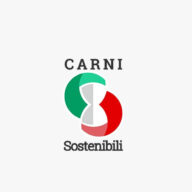
Meat production, land use and deforestation
As regards to territory, one of the most debated environmental issues about meat production concerns land use which leads to contrasting issues depending to the country of reference: in some cases, the main risk is the abandonment of agricultural land, in other cases the problem concerns the impact of aggressive human activities on the natural environment (deforestation). For example, in Italy the main problem is the transition from agricultural land to urbanized land, resulting in general abandonment of farmland by agriculturalists.
According to the latest data published by ISPRA, between 2008 and 2013 approximately 60% of the land used for cultivating crops or other types of produce (such as fruit orchards) have been urbanized or used for other purposes. Moreover, renewable energy incentives have been implemented, which have often prompted farmers to convert their land into “solar power plants” or to grow crops that can be used for producing energy (biofuels). This phenomenon has various economic and social impacts; productivity is reduced to the need to purchase raw materials from abroad. While the continuous maintenance required by farms helps to protect the territory, especially in areas at high landslide risk.
Therefore, it is essential to provide support, especially economic, to agriculture and animal husbandry in order to prevent the progressive impoverishment of the countryside.
However, in other countries the problem is that agriculture occupies areas to the detriment of other habitats. Just think of the uncontrolled deforestation of tropical forests in favour of plantations producing agricultural commodities (mainly palm oil and/or soybean oil) for food or energy purposes, or of pastureland for grazing cattle. Besides causing the loss (sometimes permanent and irreversible) of fertile soil, these transitions also cause other negative impacts such as land fragmentation, reduction in biodiversity, variations in the hydrological cycle and microclimate changes.
Although Europe is not directly affected by deforestation and in fact forested areas are in expansion, there is a phenomenon induced (embodied) by the continuous and growing demand for raw materials. All over the world global phenomena are reducing and increasing forests: the countries in which the net balance is strongly negative are South America (33% of total global deforestation), sub-Saharan Africa (31%) and Southeast Asia (19%).
From 1990 to 2008, worldwide net deforestation was estimated at 239 million hectares (Mha). The agricultural sector was responsible for the deforestation of approximately 128 Mha: 49% is land for producing animal feed or pastures for grazing cattle, 8% is used for growing vegetable products for feeding pigs and poultry, 43% is used for cultivating plant-based foods, and producing bio-fuels and textile fibres. The main five crops in the period of reference that contributed to deforestation were soybeans (19%), corn (11%), palm oil (8%), rice (6%), and sugar cane (5%).
In Europe it was estimated that embodied deforestation amounts to approximately 8.7 M ha (7% of the global total) for which the largest contribution is due to the demand for animal feed, followed by raw materials for human consumption (soybean and palm oil).
These data show a very complex phenomenon that is difficult to manage, which must take into account the growing demand for food by the world’s population. A possible solution is to reduce the amount of meat consumed in countries with high consumption rates; however, production efficiency must also be considered.
It is evident that grazing livestock is not always the most sustainable solution, also as regards to deforestation. A possible solution would be to make farmers adopt specific policies when purchasing raw materials, in order to allow for the control of the supply chain and the traceability of raw materials.
The Sustainable Meat Project




